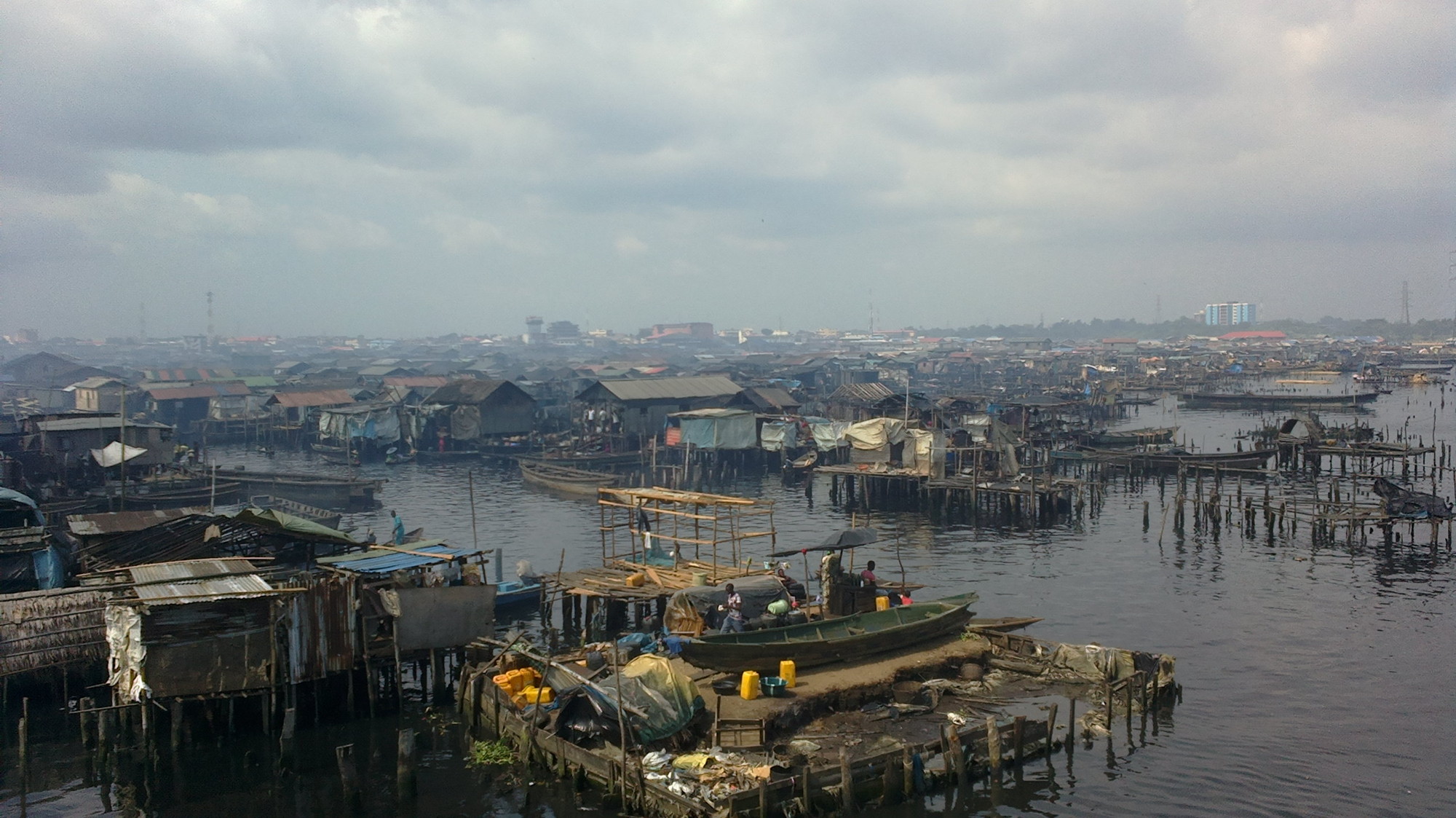
Seven humanitarian initiatives have been nominated for "Socially-Responsible Design's Highest Award,” the 2014 Buckminster Fuller Challenge. Presented by the Buckminster Fuller Institute, the $100,000 prize is awarded each year to scientists, students, designers, architects, activists, entrepreneurs, artists and planners from all over the world using innovative solutions to solve some of humanity’s most pressing problems.
Among this year’s finalists are a floating health clinic in Lake Tanganyika, a comprehensive coastal resiliency plan for the Northeastern Seaboard, and a waterfront regeneration plan for the Makoko/Iwaya community.
The 2014 Buckminster Fuller Challenge Finalists are…

The Bonobo Peace Forest is a connected network of community-managed and protected forests in vast, remote, biodiversity-rich tracts of rainforest in the Congo Basin. Founded over two-decades ago, the project’s parent group, The Bonobo Conservation Initiative, uses an inspired and highly successful “viral conservation” strategy that partners with local indigenous peoples and is driven by a partnership approach to engender sustainable prosperity while preserving the habitat of our closest genetic relative, the endangered Bonobo. To succeed at their goal of species and biodiversity conservation, their holistic work has grown immensely to include such components as ecotourism, payment for ecosystem services, participatory budgeting, agricultural support and field research training and facilitation.
The Lake Tanganyika Floating Health Clinic is a visionary, geopolitically savvy health-services initiative that seeks to address the logistical problems of providing healthcare to communities in a massive rural region where large populations are clustered on the lakeshore, but isolated from land-based networks of supplies and expertise. Its "hub & spoke" model for water-based health services, its low-carbon modes of transport, provision for capacity-building and education, its radio communications and data collection network, and its stewardship of the lake's ecological and economic destiny make it a dimensionally rich regional, and replicable, solution—effortlessly representing Bucky’s adage to “do more with less” in one of the earth’s richest freshwater ecosystems.

Living Breakwaters is a comprehensive design for coastal resiliency along the Northeastern Seaboard of the United States and beyond. This approach to climate change adaptation and flood mitigation includes the deployment of innovative, layered ecologically-engineered breakwaters, the strengthening of biodiversity and coastal habitats through “reef streets”, the nurturing and resuscitation of fisheries and historic livelihoods, and deep community engagement through diverse partnerships and innovative educational programs. The transformative educational dimension amplifies impact to the next generation of shoreline stewards while leveraging the expertise of the members of the SCAPE Architecture team, who are making groundbreaking inroads into state and federal agencies, setting new precedents for multi-layered and systemic approaches to infrastructure planning.

The Makoko/Iwaya Waterfront Restoration Plan, submitted by Lookman Oshodi of Urban Spaces Innovation in Lagos, Nigeria on behalf of the Makoko/Iwaya Working Group, is a comprehensive master plan for the Makoko/Iwaya community that seeks to preserve local culture, revitalize the built environment with elegant, low-cost housing, increase economic opportunities, and ensure disaster resilience for over 40,000 residents. Its design and implementation hinges on rigorous and deeply inspiring community planning alliances and the buy in of key stakeholders—from local elders, women, and youth to academic institutions, professional organizations, and NGOs. The plan holds the preservation of traditional lagoon-front culture as a core value, presenting a compelling vision of a floating economy based on components such as sustainable aquaculture and tourism. Not only is the master plan hugely ambitious, but it is particularly compelling as a potential adaptive trim tab for other informal settlements across the globe threatened by forced evictions, climate instability, and the public health disasters that follow from a systemic lack of social amenities.

The Food Commons marks a radical shift from a narrow focus on the production of food towards a whole systems approach in which the interests of farm communities, the land, watersheds and biodiversity are all considered. The Food Commons is conceived as the connective fiber that weaves together grassroots projects and vital support services: legal, financial, communications and organizational. A food system is a complex, dynamic process with uncountable moving parts that connect, compete, conflict, and cooperate to provide food choices to the end consumer. Part of the true innovation of The Food Commons is its vision for all-inclusive vertical integration; it is certainly an outstanding representation of Bucky’s audacious maxim: “to change something, build a new model that makes the existing model obsolete.”
The Force Majeure, a bold, large-scale vision of the world-renowned artists Helen and Newton Harrison, proposes to “reduce the entropy of planetary ecosystems in the face of human-induced climate change”. Their proposal is distinguished by its scale, holistic framework, and collaboration between artists and scientists. Their goal of developing Entropy Analysis as a new research field is just one example of their provocative attempts to engage individuals in, as Bucky would say, “thinking at the scale of the problem” by exposing people viscerally to the complexities of ecosystem change, huge issues such as global carrying capacity, and the role of indeterminacy in effective systems intervention. In their 2014 proposal, four research sites have been proposed in which the Harrisons and scientists will experiment with methods to assist nature in its response to massive system disturbances.
The Thunder Valley Regenerative Community Plan, born of a collective vision, is implementing a comprehensive strategy to build a locally owned and operated housing development in the geographic center of the Oglala Lakota Nation, on the Pine Ridge Indian Reservation in South Dakota. Through layered phases of construction and associated programs, their work addresses a critical and dire need in Indian Country for self-sufficiency, economic self-determination and ecological resilience. Through components such as a Native-owned construction cooperative and with outstanding youth leadership, the plan is poised to not only resuscitate the local economy and traditional culture by providing elegant housing in the context of a deeply sustainable community with a net-zero built environment, but also serve as a compelling, dynamic model for the rest of Indian country and the world.
A winner will be announced in November.
Project descriptions and news via BFI.

